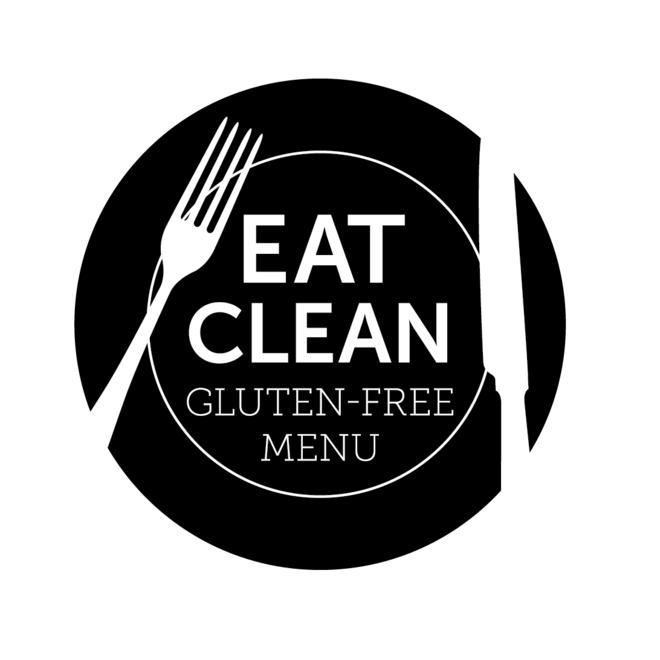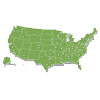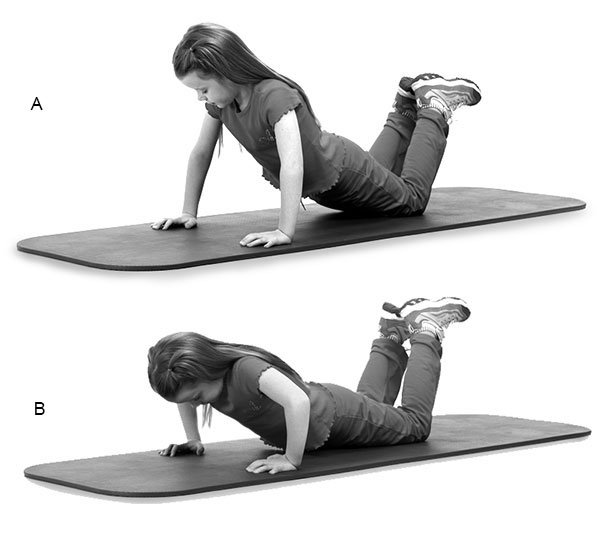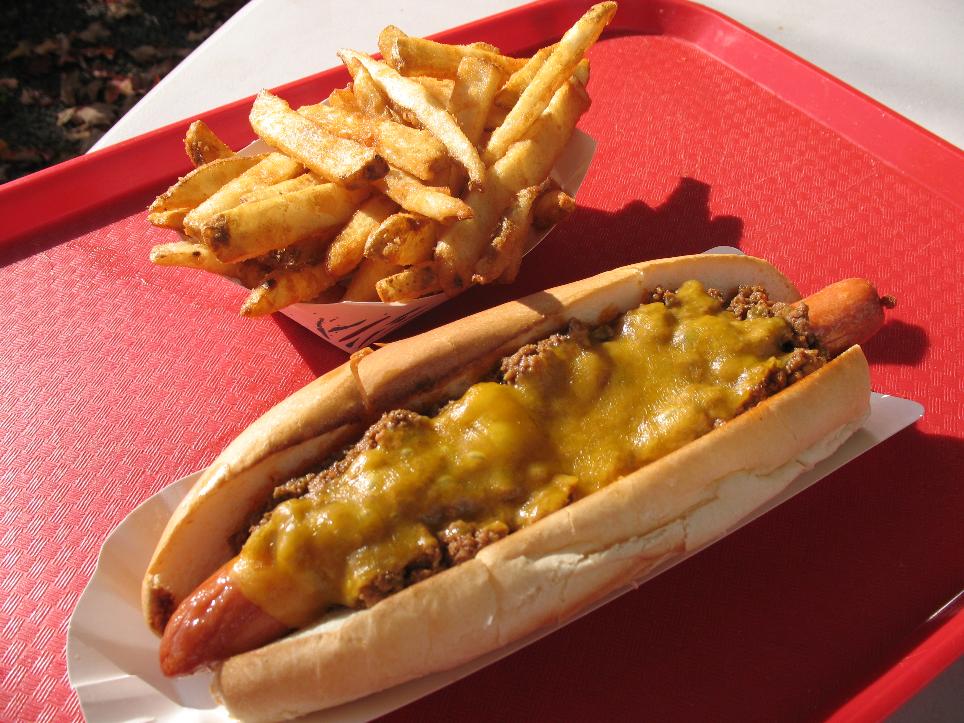TNT: Weight Loss Meal Plans
Maybe you have 50, 60, even 100 pounds to lose. Perhaps it's only 10 or 20.
Or maybe you're more interested in packing on serious muscle without packing on lard.
Whatever your goal, you can use TNT to achieve it. That's because we've created specific eating strategies based on a range of options.
One end of this spectrum is designed to help you achieve maximum fat loss; at the other, maximum muscle. And in between, you can vary the degree of each by making simple tweaks to your diet.

For example, if you have 25 pounds to lose, you'll get the fastest results with Plan A, which is a low-carbohydrate diet.
But if you want more flexibility in your diet, you might choose Plan C. This plan lets you load up on carbs one day a week, and provides the added benefit of more muscle growth. Adapt the TNT Diet to your goals and lifestyle -- not the other way around.
Go to the next page for an overview...
Here's a look at the five meal plans.
Targeted Nutrition Tactics Plan A Plan B Plan C Plan D Plan E The Fat-Burning Time Zone (Low-carbohydrate) 7 Days 7 Days 6 Days 6 Days 5 Days The Reloading Time Zone (High-carbohydrate) 0 Days 0 Days 1 Day 1 Day 2 Days The Muscle-Building Time Zone (Workout Nutrition) Protein only Protein + Carbs Protein only Protein + Carbs Protein + Carbs
We want everyone to start out by following the guidelines of TNT Plan A for the first 4 weeks.
The reason: To experience all the benefits from the other plans we offer, your body must first learn to use fat as its primary source of energy.
Think of this as lighting the TNT Diet fuse. Typically, your body will have adapted almost completely within a week or two, and the rest of the changes will occur within another 2 weeks.
After 4 weeks on Plan A, you can stay on it or switch to any of the other four plans. Simply choose your plan based on your body composition goals and on how much fat you have to lose.
Go to the next page for a little quiz to figure out what plan you should pick....
TNT Plan A
Choose this plan if any of these statements apply to you:
• You're just starting the program.
• You have more than 20 or more pounds of fat to lose.
• You want to drop more than 4 inches or more from your waist.
• You want to lose fat at the highest rate possible.
• You have metabolic syndrome or prediabetes.
What to do: Implement each Time Zone as directed, and follow the guidelines for each:
• The Fat-Burning Time Zone : Every day of the week, except 1 hour before your workout, and 1 hour after your workout.
• The Reloading Time Zone: Not implemented.
• The Muscle-Building Time Zone: 1 hour before each workout, until 1 hour after your workout, adhere to the "Protein-only" option.
TNT Plan B
Choose this plan if all of these statements apply to you:
• You've already completed 4 weeks on TNT Plan A.
• You have less than 20 pounds of fat to lose.
• You want to drop less than 4 inches from your waist.
• You want to boost the impact of your workout on muscle-growth, but emphasize fat-burning at all other times.
What to do: Implement each Time Zone as directed, and follow the guidelines for each:
• The Fat-Burning Time Zone : Every day of the week, except 1 hour before your workout, and 1 hour after your workout.
• The Reloading Time Zone: Not implemented.
• The Muscle-Building Time Zone : 1 hour before each workout, until 1 hour after your workout, adhere to the "Protein + Carbohydrates" option.
TNT Plan C
Choose this plan if all of these statements apply to you
• You've already completed 4 weeks on TNT Plan A.
• You have less than 20 pounds of fat to lose.
• You want to drop less than 4 inches from your waist.
• You want to burn fat at the highest rate possible 6 days a week, but would like a day in which you can have lots of carbohydrates, without having to worry about undoing your efforts, or stalling your progress.
What to do: Implement each Time Zone as directed, and follow the guidelines for each:
• The Fat-Burning Time Zone: Sunday through Friday, except 1 hour before your workout, and 1 hour after your workout.
• The Reloading Time Zone: All day Saturday.
• The Muscle-Building Time Zone: 1 hour before each workout, until 1 hour after your workout, adhere to the "Protein-only" option.
TNT Plan D
Choose this plan if all of these statements apply to you:
• You've already completed 4 weeks on TNT Plan A.
• You have less than 10 pounds of fat to lose.
• You want to drop less than 3 inches from your waist.
• You want to ramp-up muscle-growth, while still burning fat most of the time.
What to do: Implement each Time Zone as directed, and follow the guidelines for each:
• The Fat-Burning Time Zone: Monday through Saturday, except 1 hour before your workout, and 1 hour after your workout.
• The Reloading Time Zone: All day Saturday.
• The Muscle-Building Time Zone: 1 hour before each workout, until 1 hour after your workout, adhere to the "Protein + Carbohydrates" option.
TNT Plan E
Choose this plan if all of these statements apply to you:
• You've already completed 4 weeks on TNT Plan A.
• You have less than 5 pounds of fat to lose.
• You want to drop less than 2 inches from your waist.
• You want to maximize muscle-growth, without gaining fat.
What to do: Implement each Time Zone as directed, and follow the guidelines for each:
• The Fat-Burning Time Zone: Sunday at 10 a.m. through Friday at 6 p.m., except 1 hour before your workout, and 1 hour after your workout.
• The Reloading Time Zone: From Friday at 6 p.m. to Sunday at 10 a.m.
• The Muscle-Building Time Zone: 1 hour before each workout, until 1 hour after your workout, adhere to the "Protein + Carbohydrates" option.
On the next page, you'll see what you get to eat!
The Fat-Burning Time Zone
No matter which TNT plan you've chosen, the foods in the Fat-Burning Time Zone will form the foundation of your diet. They're low in carbohydrate so they won't raise your levels of insulin or glycogen.
Just follow the five nutrition tactics below.
1. Choose liberally from the Fat-Burning Time Zone foods. Feel free to eat any combination of these foods until you feel satisfied, but not stuffed. These "restrictions" sound too easy to work, but study after study has shown that eating this way promises more dramatic fat loss than any other approach -- without the need to count calories.
2. Consume high-quality protein at every meal. Eating protein ensures that your body always has the raw material available to build and maintain muscle, even while you lose fat.
3. Don't fear fat. Fat is crucial in helping you control the total number of calories you eat -- it makes you feel satisfied.
4. Indulge on vegetables. On average, the most successful low-carb dieters consume at least 4 servings of low-starch vegetables a day. That's almost any vegetable other than potatoes, carrots, and corn.
5. Avoid sugar and starch. Avoid bread, pasta, potatoes, beans, rice, fruit, milk, candy, regular soda, and baked goods -- as well any other foods that contain grains, flour or sugar.
These foods either raise blood sugar and insulin levels, or replenish glycogen -- all of which inhibit your body's ability to burn fat for energy.
You might be surprised to see fruit and milk on this list, but it's not because either are unhealthy -- they simply provide too many glycogen-replenishing carbs, in the form of natural sugars.
THE FAT-BURNING TIME ZONE FOODS
High-Quality Protein
Low-Starch Vegetables*
Natural Fats
Beef
Artichokes
Mushrooms
Avocadoes
Cheese
Asparagus
Onions
Butter
Eggs
Broccoli
Peppers
Coconut
Fish
Brussels Sprouts
Spinach
Cream
Pork
Cauliflower
Tomatoes
Nuts** and Seeds
Poultry
Celery
Turnips
Olives, Olive oil, and Canola Oil
Whey and Casein Protein
Cucumbers
Zucchini
Sour Cream
* These are just a few common examples of low-starch vegetables; the full list includes almost all vegetables except potatoes, carrots, and corn.
** Limit to 2 servings a day.
The Reloading Time Zone
Whenever you enter the Reloading Time Zone, your glycogen levels will be low due to the time you've spent in the Fat-Burning Time Zone.
This prepares your body to embrace high-carb foods, without the negative consequences that occur when your glycogen tank is overflowing. And the added bonus: A surge of muscle growth.
1. Eat any combination of these foods until you feel satisfied, but not stuffed. You'll automatically avoid junk food, the universal downfall of all diets.
2. Eat high-quality protein at every meal, and every 3 hours, if possible. The goal is to provide your muscles with a steady supply of the nutrients they need to grow.
3. Consume carbohydrates at each meal. The idea is to boost your insulin levels at every meal, in order to drive nutrients to your muscles. So during the Reloading Time Zone, besides vegetables, you can enjoy pasta, sandwiches, cereal, and pancakes, as well as snacks such as fruit, popcorn, and pretzels.
4. Go easy on extra fats. The reason is simple: You can only eat so many calories in a day without gaining fat. Since you'll be increasing your intake of carbs, that doesn't leave a lot of room for additional calories from sources such as nuts, seeds, and butter. This doesn't mean you should eliminate fat all together, only that your intake should be incidental.
5. Avoid added sugar and refined grains. Primarily, this means foods that are made with sugar -- regular soda, cake, cookies -- or with flour that it isn't 100 percent whole wheat -- for instance, white bread and white pasta. Technically, these carbohydrates are allowed in the Reloading Time Zone, since their purpose is to raise insulin levels. But we highly encourage you to eat quality sources of carbohydrate. That is, carb-rich foods that are also packed with nutrients, such as 100 percent whole grain products and high-fiber beans. These are what we call Nutrient-Dense Carbohydrates.
The Reloading Zone Foods
High-Quality Protein
Fruits and Vegetables*
Nutrient-Dense Carbohydrates
Beef
Asparagus
Apples
Beans
Cheese
Broccoli
Bananas
Bread
Eggs and Egg Whites
Carrots
Berries
Cereal
Fish
Corn
Grapes
Flour
Kefir
Onions
Melons
Oats
Milk
Peppers
Oranges
Pasta
Pork
Potatoes
Pineapples
Rice
Poultry
Spinach
Pears
Quinoa
Yogurt
Tomatoes
Peaches
Tortillas
*These are just a few common examples of fruits and vegetables; just about any type of produce imaginable is acceptable.
The TNT Guide to CheatingThe objective of the Reloading Time Zone is to replenish glycogen and raise insulin levels. So that makes it the best time to indulge your cravings for junk foods such as candy, chips, regular soda, and even takeout pizza.
We don't recommend these foods for your health, or for optimal results. But we do realize that most people won't follow the guidelines of this diet -- or any other diet -- 100 percent of the time.
So by limiting all intake of these foods to the Reloading Time Zone -- when your glycogen levels are low -- you'll be able to eat them without significantly sabotaging your progress. This strategy also ensures that you’re eating healthy foods most of the time.
All of this is provided, of course, that you don't overdo it. Junk foods are high in calories and taste good, which means they’re easy to overeat. Down too much of them, and you’ll fill your glycogen tank, priming your body to store fat.
Sure, you could overeat whole grains, beans, fruits, and vegetables, too, but it's not likely -- especially in the duration of the Reloading Time Zone. Limit junk foods to one meal during the Reloading Time Zone. For instance, that might mean take-out pizza night for one guy, and "lunch" at Cold Stone Creamery for another.
The Muscle-Building Time Zone
When you chose your TNT Plan, it included a Muscle-Building Time Zone that was either "Protein-only" or "Protein + Carbohydrates."
In either category, do your best to adhere to the "ideal" protocol when possible. Of course, depending on when you work out, your schedule, and your budget, you may find this isn't always practical. So at the very least abide by the "acceptable" guidelines.
Protein Only
(TNT Plans A and C)
Prepare a protein shake (mixed with water) that provides a blend of at least 40 grams of whey and casein protein. When choosing a product, look for one that contains both whey and casein protein, and which has only small amounts of carbs and fat.
• Drink half of the beverage 30-45 minutes before your workout; drink the other half immediately after your workout.
• Eat a Fat-Burning Time Zone meal or snack that contains high-quality protein within 30 minutes to an hour after your training session. (Your snack could be another 20 to 40-gram protein shake.)
Protein + Carbohydrates
(TNT Plan B, D, and E)
Prepare a protein shake (mixed with water or milk) that provides a blend of at least 40 grams of whey and casein protein, and 40 to 80 grams of carbohydrates. When choosing a product, look for one that contains both whey and casein protein, and which has little or no fat. As a good alternative, opt for a 16-ounce carton of low-fat chocolate milk or low-fat, fruit-flavored kefir.
• Drink half of the beverage 30 minutes before your workout; drink the other half immediately after your workout.
• Eat a Fat-Burning Time Zone meal or snack that contains high-quality protein within 30 minutes to an hour after your training session. (Keep in mind, your Fat-Burning Time Zone snack could be another 20 to 40 gram protein shake, made without the carbs.)
To read how to make the best shakes and high-protein meals, go to the next page.
The Muscle-Building Time Zone: Protein-only (Plans A and C)
The ideal protein snack
• Prepare a protein shake (mixed with water) that provides a blend of at least 40 grams of whey and casein protein. When choosing a product, look for one that contains both whey and casein protein, and which has only small amounts of carbs and fat. Here are three products we like, but comparable protein powders work as well. Keep in mind that if the product provides, say, 24 grams of protein per serving, you'll want to make two servings. That'll result in 48 grams of protein, which is fine. Your charge is to consume a minimum of 40 grams.
• Biotest Metabolic Drive Super Protein Shake
Available at: t-nation.com and biotest.net
Per serving (make 2 servings):
20 grams of protein
4 grams of carbohydrate
1.5 grams of fat
• At Large Nutrition Nitrean
Available at: atlargenutrition.com
Per serving (make 2 servings)
24 grams of protein
2 grams of carbohydrate
1 gram of fat
• MET-Rx Protein Plus Protein Powder
(46 gram METAMYOSYN Protein Blend)
Available at: metrx.com
Per serving (make 1 serving):
46 grams of protein
3 grams of carbohydrate
1.5 grams of fat
• Drink half of the beverage 30-45 minutes before your workout; drink the other half immediately after your workout.
• Eat a Fat-Burning Time Zone meal or snack that contains high-quality protein within 30 minutes to an hour after your training session. (Your snack could be another 20 to 40 gram protein shake.)
Practical Alternatives
Good: Consume at least 20 grams of high-quality protein, in the form of solid food, 45-60 minutes before your workout. Then eat a regular meal (Time Zone 1) within an hour after your training session. The best choices for pre-workout protein:
• A small can (3.5 ounces) of tuna.
• 3 to 4 ounces (about to 3 to 4 slices) of lean deli-meat, such as turkey or chicken.
• A serving of any kind of lean meat that’s about the size (length, width, and thickness) of a deck of cards.
• 1 cup of egg substitute, such as Egg Beaters, or six egg whites, both of which can be cooked quickly in a microwave.
Acceptable: Consume at least 20 grams of high-quality protein -- either from a whey-casein protein blend, 100 percent whey protein, or solid food -- anywhere from one hour before to one hour after your workout. Then eat a regular meal (Fat-Burning Time Zone) within two hours after your training session.
The Muscle-Building Time Zone: Protein + CarbohydratesThe Ideal Protein + Carb snack
• Prepare a protein shake (mixed with water or milk) that provides a blend of at least 40 grams of whey and casein protein, and 40 to 80 grams of carbohydrates. When choosing a product, look for one that contains both whey and casein protein, and which has little or no fat. This is the one time when sugar is perfectly acceptable. That's because it can be used immediately for energy during your workout, and provides an insulin spike to slow protein breakdown -- speeding muscle growth -- after your workout. It's okay if you overshoot on the protein, but put a cap on your carb intake at the recommended 80 grams. Three products that fit our criteria:
• Biotest Surge Recovery
Available at: t-nation.com and biotest.net
Per serving (make 1.5 servings):
25 grams of protein
46 grams of carbohydrate
2.5 grams of fat
• At Large Nutrition Opticen
Available at: atlargenutrition.com
Per serving (make 1.5 servings):
52 grams of protein
25 grams of carbohydrate
1.7 grams of fat
• MET-Rx Xtreme Size Up
Available at: metrx.com
Per serving (make 1 serving):
59 grams of protein
80 grams of carbohydrate
6 grams of fat
• Drink half of the beverage 30 minutes before your workout; drink the other half immediately after your workout.
• Eat a Fat-Burning Time Zone meal or snack that contains high-quality protein within 30 minutes to an hour after your training session. (Keep in mind, your Fat-Burning Time Zone snack could be another 20 to 40 gram protein shake, made without the carbs.)
Practical Alternatives
Good: Consume at least 20 grams of high-quality protein and 40 grams of carbohydrates, in the form of solid food or milk, one hour before your workout. Then eat a Fat-Burning Time Zone meal within an hour after your training session ends.
To accomplish the first task, a turkey sandwich will do nicely. Each slice of bread has between 15 and 20 grams of carbohydrates -- for a total of about 40 grams -- and four slices of turkey contains in the neighborhood of 20 grams of protein.
Because vegetables contain very few carbs, include as many of them as desired, along with non-fat condiments such as mustard and horseradish.
We've created a short list of protein and carbohydrate foods that you can easily combine to satisfy these guidelines. But in a pinch, just opt for a 16-ounce carton of low-fat chocolate milk. It provides about 16 grams of protein and 50 grams of carbohydrates -- close enough on both counts.
Or even better, check out the health food section of your grocery story for low-fat, fruit-flavored kefir, which provides 28 grams of protein and 50 grams of carbs in every 16 ounces.
• Foods that contain 20 grams of protein:
• A small can (3.5 ounces) of tuna
• 3 to 4 ounces (about to 3 to 4 slices) of lean deli-meat, such as turkey or chicken
• A serving of any kind of lean meat that’s about the size of a deck of cards
• 1 cup of egg substitute, such as Egg Beaters, or six egg whites, both of which can be cooked quickly in a microwave
• Amount and type of foods that contain 15 to 20 grams of carbohydrates (you need a total of 2 servings):
• 1 slice of bread
• 1/2 cup of cooked pasta
• 1/2 cup of cooked rice
• 1/2 cup of cereal
• 1/2 medium potato
• 1 cup of berries or sliced fruit
• 1 whole apple, orange, peach
• 1/2 a large banana
• Foods that contain both protein and carbohydrates (per 8-ounce cup)
Food
Protein
Carbs
Milk
8
12
Chocolate Milk
8
25
Plain Yogurt
8
12
Fruit Yogurt
8
25
Kefir
14
12
Flavored Kefir
14
25
Cottage Cheese
31
8
Acceptable: Consume at least 20 grams of high-quality protein and 40 grams of carbohydrates -- from a protein shake, solid food, or milk -- anywhere from one hour before to one hour after your workout. Then eat a Fat-Burning Time Zone meal within two hours after your training session.
-
Jump over your Abs Diet ab exercise plateau
Stop doing so many crunches. Instead, add weights to your ab routine a
-
Achieve weight loss with Abs Diet recipes
Abs are made in the kitchen. Make sure youre eating the right foods fo
-
Diet Strategies: Eating Plan
Your Times to Dine 6:30 A.M. BREAKFAST Denver omelet (turkey ham, gree
-
Abs Diet- Vertical Leap Leg Exercises
How do I improve my vertical leap?
-
9 Weight-Loss Rules that Work
Two years ago, I presented 10 dietary rules for the man who wants bigg
-
Weight Loss Success Stories: Inspiration
Motivator His head shot in the company newsletter snapped hi
- DON'T MISS
- The Worlds Best Vegetarian Protein Sources
- Drink to Your Abs!
- Lose Weight Around the Clock
- Americans Ate a TON of Food Last Year!
- Belly Off! with Joe Lopez:
- Smoothie King Almost Duped Me!
- Better Ways to Eat Almonds
- 21 Simple Fat Loss Tips
- The Surprising Way to Cut Calories
- Abs Diet: Healthy Chicken Recipe




